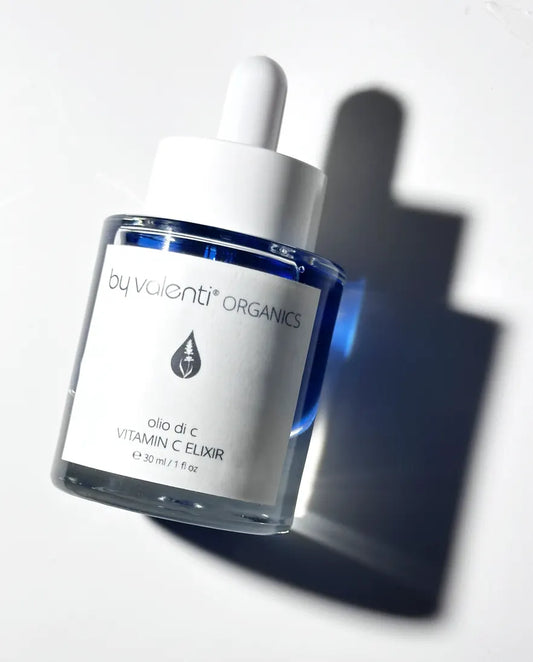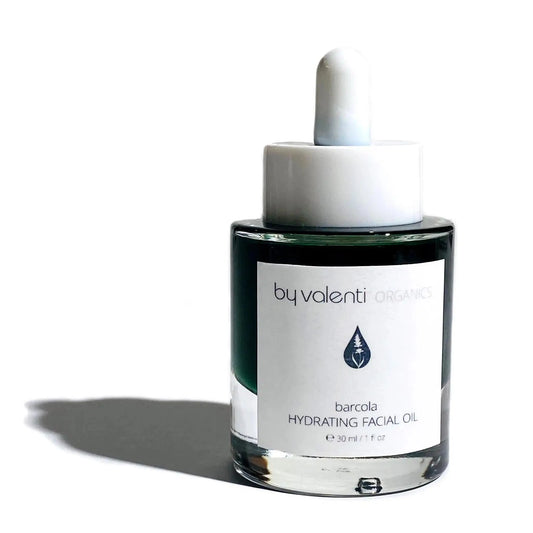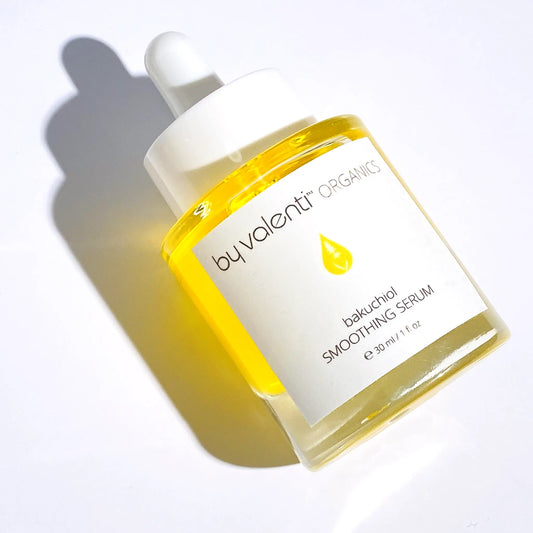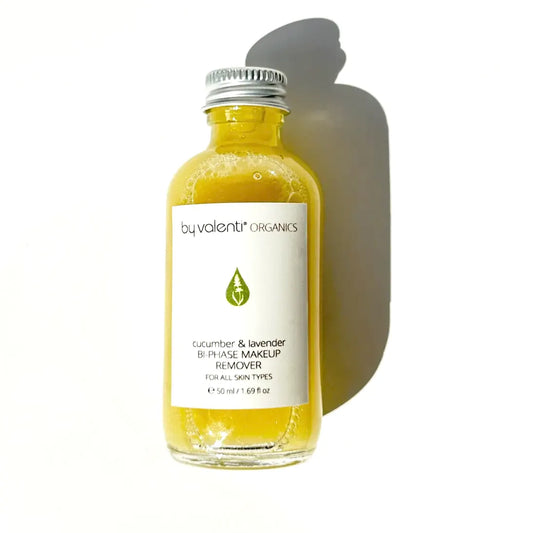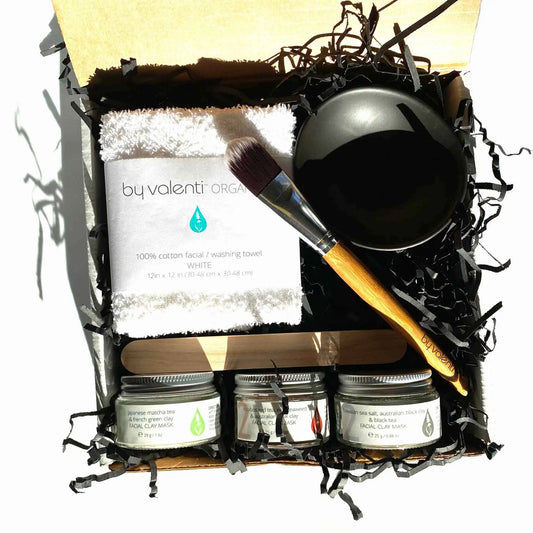Skin Care Product Layering 101 - How to do it the right way
Manuela ValentiShare
Do it right, with the right products, and you will see the results in no time. Do it wrong and you might not see any results at all.
Applying too many products, in the wrong order or even mixing incompatible ones could have the opposite effect, smothering your skin, making it look dull and lifeless or gain even more pimples and wrinkles in the short run.
Isn't a skin care routine the same as Layering Products?
Yes!
Any proper skin care routine requires layering or applying products in a certain order for maximum benefit, even the ones in charge of nourishing and repairing the skin.
Step 1 - Cleansing
When it comes to cleansers there are technically three kinds:
- Oil cleansers (not to be confused with makeup remover) always as part of the double cleansing method to deeply dissolve gunk secreted during the night,
- Foaming Cleansers soap or detergent based can be applied alone or ALWAYS after an oil cleanser — Double Cleansing Method — to completely remove left over oil from either the oil cleanser or the makeup remover, so toners can properly do their work.
- Makeup Removers applied generally speaking during the night as part of the evening beauty routine as their name indicates, remove all traces of makeup before bed time.
Step 2 - Exfoliating
Exfoliants which range from chemicals (salicylic acids and such) to mechanical (exfoliating masks), which shouldn't be applied no more than 1-2 times a week, have the function of removing dead skin cells from the outer layer of the skin, by either mechanical action or chemical action, to speed up cell turnover and increase skin regeneration. Overdoing this step could irritate and even damage the skin.
Step 3 - Toning
Toners and Spritz are ALWAYS applied either after cleansing (if no exfoliation takes place) or after exfoliation. This is the most important step in your beauty routine and one that is often missed by many, or applied at the wrong time. Toners are in charge of refreshing the skin, re-hydrating it, and preparing the skin for the better absorption of nourishing products.
Step 4 - Nourishing
The nourishing products in your beauty routine must be applied in the correct order as well to maximize their effects on the skin. These are the ones in charge of feeding the skin the right nutrients, aiding the skin in repairing itself, making it look younger, healthier and glow!
There are tons of articles on the internet advising you to plaster your face with as many products as you possible can. Wrong advise!
Even though the trends and the enormous amount of products on the market today will make you wanting to apply them all at once, we here at By Valenti Organics, recommend light applications of no more than 2-3 products for your morning or evening routines.
Your skin needs to breathe! Keep it simple and light!
The thing is your skin has a limit on what it can handle. Too many products and you will most certainly clog your pores creating more comedones and acne, or even aging it further.
How you layer them is as important as what products you combine
The key to layering your nourishing products relies on what's in them, their ingredients and especially their active ingredients.
4.1. Water Based First
As a rule of thumb aqueous products without any oils go first. These could be hyaluronic serums, water based vitamin C serums, Niacinamide Serums, or any water based skin care product including hydrating masks.
4.2. Light Emulsions Take the Second Place
An emulsion is a blend of mostly water or water based ingredients, and oils held together by an emulsifier. An emulsifier is the glue holding those two molecules — water and oil — together. These formulas are carefully designed to allow the aqueous ingredients to penetrate the outer layer of the skin, while the oils act as emollients gently softening the skin sealing in moisture.
4.3. Spot Treatments
As it name implies, they are targeted products with very specific duties, usually zap that pimple from ever showing up. Always applied during your night routine rather than the morning one. Spot treatments are usually on the acidic side of the spectrum, and acids and sun might irritate the skin. Plus at night is when they're more effective.
4.4. Pick one Either Oils or Creams
Creams, oils and oil serums are the last ones to be applied. Why? Because their scope is to seal in water based products so they don't evaporate, sealing in all the nutrients while combining their powers. When applied before aqueous serums, the wonderful ingredients in the serums will remain atop the oil, like drops of water on a waxed car, and will never be absorbed by the skin.
Creams are emulsions just like lotions, but they contain much larger amounts of oils than water, so they tend to work slowly and be heavier on the skin. They're better applied during the evening routine, and avoided at all costs around the eye areas.
If a cream is in your beauty schedule for the day, leave the oil for another day, to prevent smothering your skin and clogging your pores.
TIPS:
- Avoid mixing oils with lotions or creams, as you would be altering the absorbability of the active ingredients in the lotion, creating a heavier layer your skin might not be able handle.
- Allow a few minutes for the skin to absorb the product before adding a new one.
- Avoid heavier applications during the night. At night is when your skin regenerates, so make sure you're applying the right products to do the heavy work.
- Avoid combining acids together such as salicylic acid, lactic acid and alpha hydroxy acid as together they could irritate your skin.
- If your skin is on the sensitive side avoid combining certain active ingredients, or use products that combine them, such as retinoid/retinol and alpha hydroxy acid, or retinol and salicylic acid.
The Bottom Line
Not everyone loves nor needs a 10 product beauty routine, so don't feel pressured to stick to the one above.
Just a simple 3-product routine that involves a good cleanser, toner and a multipurpose nourishing serum can be a starting point and even a healthy minimalist routine to stick to.
Whatever your skin needs, know there's a plethora of products designed just for your skin type and concern, and you can always add more as you age.
Have fun experimenting!





